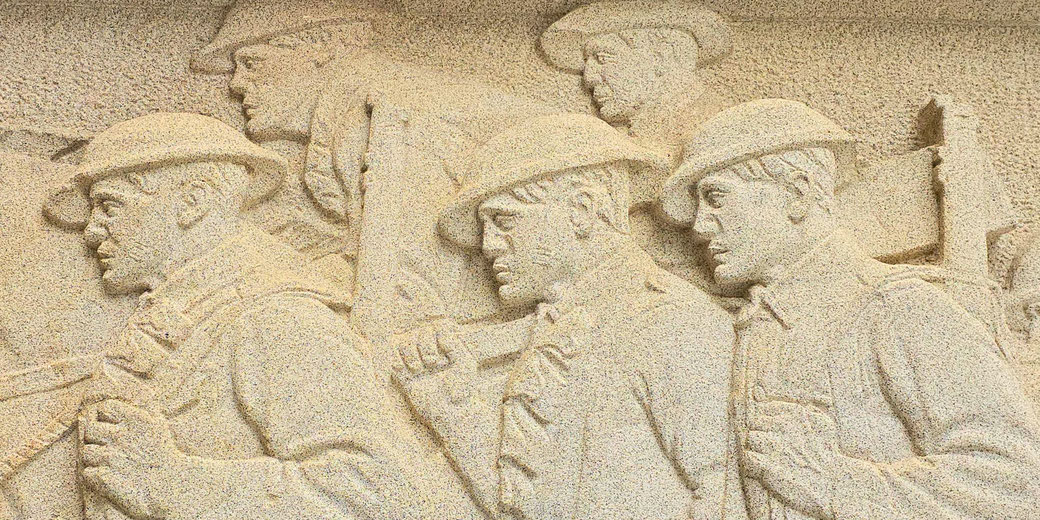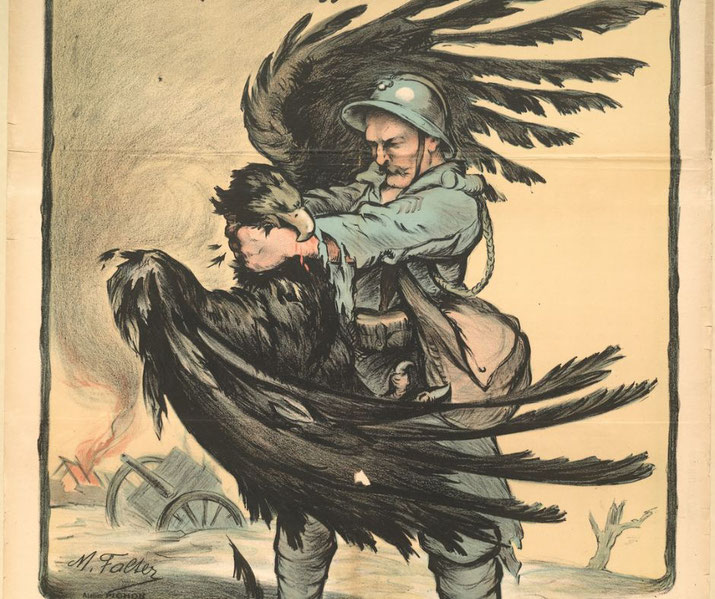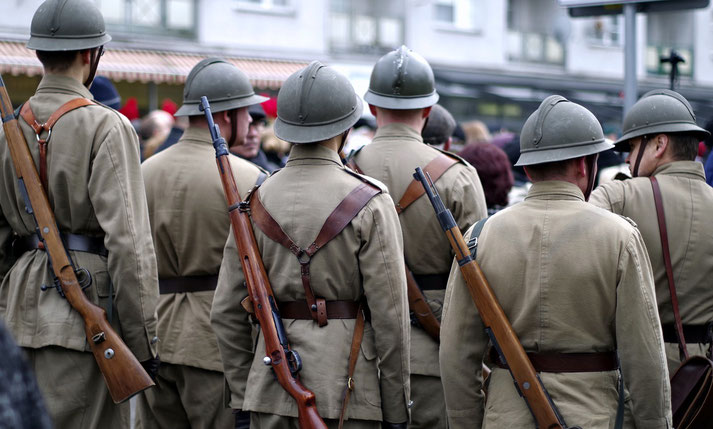Catastrophic battles and brutal failures: The first few months of World War One

The year 1914 was a pivotal one for the world. It was the year that World War One began, and it would change the course of history forever.
In this article, we will take a look at some of the key events that took place during 1914.
The shot heard around the world
The first event that we will look at is the assassination of Archduke Franz Ferdinand.
This event is widely considered to be the main trigger for the start of World War One.
On June 28th, 1914, heir to the throne of the Austrian-Hungarian empire, Franz Ferdinand, was visiting Sarajevo in Bosnia.
He was there to inspect Austro-Hungarian troops, but he was also seen as a symbol of Habsburg power.
During his visit, Franz Ferdinand was shot and killed by a Serbian nationalist named Gavrilo Princip.
This act set off a chain of events that would lead to war.
Declarations of war
After the death of Franz Ferdinand, Austria-Hungary blamed Serbia for the assassination and declared war on them on July 28th.
This act ultimately led to a domino effect where other countries began declaring war on each other.
Russia began to mobilise its troops on July 30, 1914, in direct response to the declaration of war from Austria-Hungary.
This act led France to start mobilising its troops as well.
At this point, there were already four countries that were preparing for war: Austria-Hungary, Serbia, Russia, and France.
On the 1st of August, Germany declared war on Russia, and, by the 3rd of August, almost all of the other countries had also declared war.
The Schlieffen Plan
The United Kingdom was not far behind. On August 4th, they declared war on Germany.
The reason for this was because Germany had invaded the British allied country of Belgium, as part of Germany's 'Schlieffen Plan'.
The plan had been created in 1905, but it was never put into action until 1914. The Schlieffen Plan was a German military strategy that called for a rapid invasion of France through Belgium.
The goal was to avoid fighting a war on two fronts: both against France and Russia.
The theory was that if Germany could defeat France in a quick war, then they would be able to focus their efforts on Russia.
However, Britain saw the invasion of Belgium, which was a neutral country, as a violation of their alliance with them, and decided to intervene.
As a result, the British Expeditionary Force (BEF) landed in France on the 7th of August.
The Rape of Belgium
As the German army marched through Belgium, they committed numerous atrocities against Belgian civilians.
This included the murder, the destruction of homes and businesses, and even the violent treatment of women and children.
These acts came to be known as 'The Rape of Belgium'. The German army was widely condemned for their actions by other countries, and it led to a further deterioration of relations between Belgium and Germany.
The first battle of the war occurred during this time and was known as the Siege of Liège.
From August 5th-16th, Belgian resistance at Liège managed to temporarily slow down the German advance.
However, Germany's armies had successfully followed the Schlieffen Plan, moved through the country, and had entered France by September 1914.
They quickly advanced towards Paris, and it looked like they were going to steal an early victory in the war.
The Battle of Tannenberg
As the German army invaded France through Belgium, they also invaded Russia through East Prussia.
This led to the famous Battle of Tannenberg. This would become known as one of the first major battles on the eastern front of World War One.
Before this battle, the Russians had been planning to invade Germany through East Prussia.
However, the Germans were able to intercept them near the town of Tannenberg.
The battle, which was fought between August 26th and 30th, ended in a crushing defeat for the Russians.
This victory gave the Germans a much-needed boost of confidence that their strategies were working.
The First Battle of the Marne
Back on the western front, the French and British armies were not doing very well in their fight against the Germans.
Their first engagement with the enemy occurred at the Marne River, in what is known as the First Battle of the Marne.
Fought across multiple days, from September 6th and 9th, it technically ended in a draw.
However, it was considered to be a strategic victory for the Allies because they were able to stop the German advance towards Paris.

The race to the sea
After the bloodshed in the First Battle of the Marne, both sides realized that they were not going to be able to win a quick victory.
So, the German armies began retreating back towards Belgium while trying to fight off the advancing allied forces.
Germany was looking for any natural defensive line which they could use to hold ground against their attackers.
However, this essentially resulted in both sides realising that they had to move quickly to capture the most important towns, especially the coastal port cities.
This period of time, between October and November 1914, became known as the 'Race to the Sea'.
The 'race' was, in reality, a series of attempts by both sides to outflank each other's armies and secure a decisive advantage on the Western Front.
However, neither side was successful, and it resulted in a stalemate.
The First Battle of Ypres
The Race to the Sea during 1914 culminated in the hard-fought and bloody First Battle of Ypres, between October 19th and November 22nd.
Ultimately, the Allies were able to drive back the German advance, but both sides took heavy casualties.
This would be the last time in the war where vast armies moved in rapid advances across open ground.
By this stage of 1914, the sheer death toll that resulted from new industrial weapons, like machineguns and artillery, showed both sides that leaving armies without defences was foolhardy.
They had to find a way to protect their forces. This is where trenches became an important feature of the conflict.
The start of trench warfare
Trench warfare is a type of fighting where two armies dig trenches in order to protect themselves from enemy attack.
This was first used with great effect in the First Battle of Ypres, and it quickly became the norm for the rest of the war.
In a cruel twist, trench warfare actually resulted in very high casualties. This was because soldiers were often stuck in one place and unable to move when attacked by artillery.
Rather than offering a way to win the war, trench warfare meant that the conflict was stuck in a permanent stalemate.
So, both sides sought a way to break through the enemy lines. Sadly, this often resulted in even bloodier battles than had been seen in 1914.

The Christmas Truce
As the year of 1914 drew to a close, one of the most famous events of World War One took place.
It was called the 'Christmas Truce'. This occurred on December 24th, 1914, when British and German soldiers decided to stop fighting and instead celebrate Christmas together.
The truce was only meant to last for that one day, but it actually lasted for several days.
During this time, the soldiers tried to forget the horrors of the previous months. They exchanged gifts, played football together, and even sang carols.
However, the truce eventually ended, and the gruesome fighting resumed.
The end of 1914
By the end of 1914, the situation in Europe had changed dramatically. Millions of people had been drafted into the armies, and tens of thousands had already been killed or wounded.
The war was no longer a short conflict that would be over by Christmas. Instead, it had become a long, grinding battle where both sides were fully committed to fighting.
It would take another four years of fighting, and millions more casualties, before the war finally came to an end.

Further reading
What do you need help with?
Download ready-to-use digital learning resources
Copyright © History Skills 2014-2025.
Contact via email
With the exception of links to external sites, some historical sources and extracts from specific publications, all content on this website is copyrighted by History Skills. This content may not be copied, republished or redistributed without written permission from the website creator. Please use the Contact page to obtain relevant permission.







